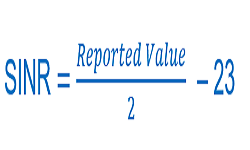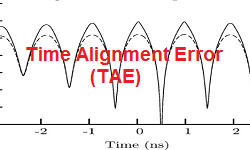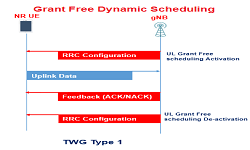5G NAS – Authentication Failures Cause Values
In 5G Network, Non-access stratum (NAS) layer managed the PLMN specfic Network Failure and Authentication Failures between the 5G UE and 5G Core. Mutual authentication is a mandatory security procedure between the UE and the network, If either is suspecting any issue the it can send an Authentication Reject or Authentication Failure with relevant reason.
We have listed here most common seen Failure Causes and Reason for PLMN related and Authentication related issue.
- Cause #20 – MAC failure
- This 5GMM cause is sent to the network if the USIM detects that the MAC in the AUTHENTICATION REQUEST message is not fresh
- Cause #21 – Synch failure
- This 5GMM cause is sent to the network if the USIM detects that the SQN in the AUTHENTICATION REQUEST message is out of range
- Cause #22 – Congestion
- This 5GMM cause is sent to the UE because of congestion in the network (e.g. no channel, facility busy/congested etc.)
- Cause #23 – UE security capabilities mismatch
- This 5GMM cause is sent to the network if the UE detects that the UE security capability does not match the one sent back by the network
- Cause #24 – Security mode rejected, unspecified
- This 5GMM cause is sent to the network if the security mode command is rejected by the UE for unspecified reasons
- Cause #26 – Non-5G authentication unacceptable
- This 5GMM cause is sent to the network in N1 mode if the “separation bit” in the AMF field of AUTN is set to 0 in the AUTHENTICATION REQUEST message.
- Cause #28 – Restricted service area
- This 5GMM cause is sent to the UE if it requests service in a tracking area which is a part of the UE’s nonallowed area or is not a part of the UE’s allowed area.
- Cause #43 – LADN not available
- This 5GMM cause is sent to the UE if the user-plane resources of the PDU session are not established when the UE is located outside the LADN service area
- Cause #65 – Maximum number of PDU sessions reached
- This 5GMM cause is used by the network to indicate that the procedure requested by the UE was rejected as the network has reached the maximum number of simultaneously active PDU sessions for the UE.
- Cause #67 – Insufficient resources for specific slice and DNN
- This 5GMM cause is sent by the network to indicate that the requested service cannot be provided due to insufficient resources for specific slice and DNN
- Cause #69 – Insufficient resources for specific slice
- This 5GMM cause is sent by the network to indicate that the requested service cannot be provided due to insufficient resources for specific slice
- Cause #71 – ngKSI already in use
- This 5GMM cause is sent to the network in N1 mode if the ngKSI value received in the AUTHENTICATION REQUEST message is already associated with one of the 5G security contexts stored in the UE
- Cause #73 – Serving network not authorized
- This 5GMM cause is sent to the UE if the UE initiates registration towards a serving network and the serving network fails to be authorized by the UE’s home network
- Cause #90 – Payload was not forwarded
- This 5GMM cause is sent by the network to indicate that the requested service cannot be provided due to payload could not be forwarded by AMF
- Cause #91 – DNN not supported or not subscribed in the slice
- This 5GMM cause is sent by the network to indicate that the requested service cannot be provided due to payload could not be forwarded by AMF because the DNN is not supported or not subscribed in the slice selected by the network if the UE did not indicate a slice, or the DNN is not supported or not subscribed in the slice indicated by the UE.
- Cause #92 – Insufficient user-plane resources for the PDU session
- This 5GMM cause is sent by the network to indicate that the requested service cannot be provided due to insufficient user-plane resources for the PDU session.
Reference
- 3GPP TS 24.5015G; Non-Access-Stratum (NAS) protocol for 5G System (5GS)
Related Post
- 5G System Connection Management: CM-Idle and CM-Connected
- 5G NAS PDU Session Reject Cause Values and Reasons
- 5G Standalone Mode Registration-Attach Call Flow
- 5G RAN and 5GC Network Slice Signaling
- 5G NAS Registration Reject Cause



